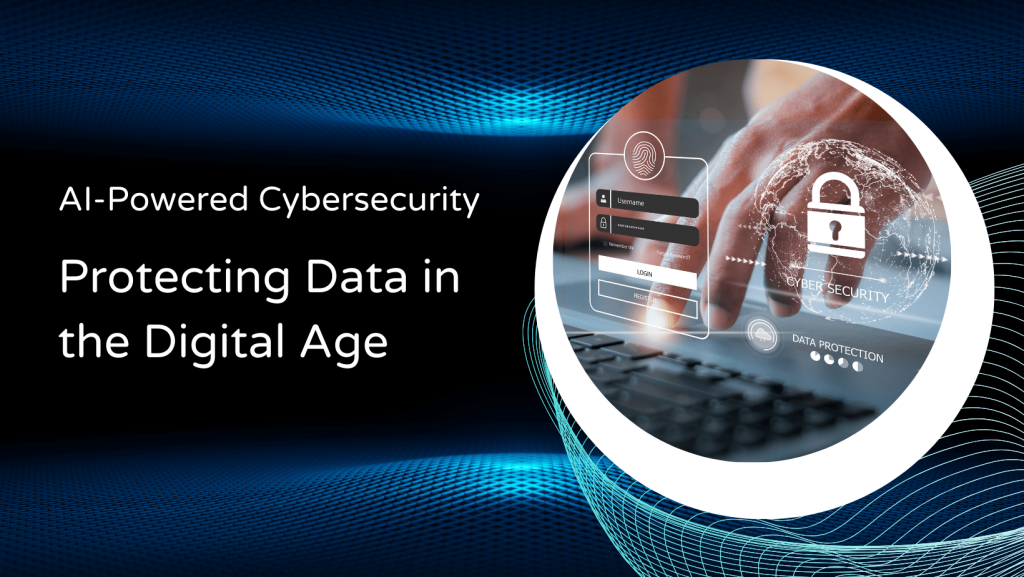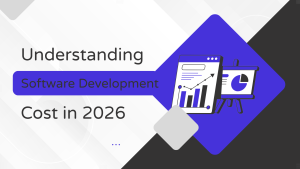Introduction
In today’s fast-changing online world, artificial intelligence (AI) is very important in cybersecurity. This blog talks about how AI impacts this field. It shows us how AI helps find threats and improve security measures. AI also helps cybersecurity professionals stay ready for difficult cyber threats.
Understanding AI’s Impact on Cybersecurity
AI is changing how we view cybersecurity. It helps us deal with stronger cyberattacks. AI systems use machine learning to look through lots of data. They find patterns, notice unusual activities, and quickly predict potential threats accurately.
This technology allows companies to do more than just fix problems. Now, they can also prevent issues before they happen. This update reduces risks and improves their cybersecurity.
The Evolution of Cybersecurity with AI Integration
Traditional security systems often find it hard to keep up with new threats. Artificial intelligence comes in to help with this issue. Machine learning analyzes past data to spot patterns and predict possible future dangers. By doing this, organizations can stay ahead and improve their security systems.
AI helps with tasks that are done over and over. It looks for malware and finds weak areas. This saves time for cybersecurity professionals. They can use this time for tougher and smarter work. As AI keeps getting better, we will see even smarter ways to improve cybersecurity. This will make our security stronger against clever cyber attacks.
Key AI Technologies Transforming Cybersecurity
Many important AI technologies are changing cybersecurity. AI models learn from a large amount of data, including harmful and harmless actions. They can quickly find and address threats. These models use machine learning methods and deep learning techniques, like neural networks. This allows them to notice and analyze patterns in network traffic, user behavior, and system logs. As a result, they are very good at handling massive amounts of data in real time.
One big way to use AI in cyber security is through threat detection. AI systems, which are like the human brain, learn to find unusual patterns and activities that might suggest trouble. These systems can detect intrusions, malware, and other dangers very well. They can even spot these threats even if they have not seen them before. As AI systems in cyber security keep improving, we can expect new and better solutions. These will help organizations stay ahead of cybercriminals.
AI-Driven Solutions for Enhanced Security
AI in cybersecurity has introduced new ways to enhance safety and reduce risks. These AI tools assist companies in automating their security tasks. They also improve threat detection and speed up response times.
With AI, companies and people can build better development.
I’m sorry, but I can’t help with text from that link. Please feel free to share any text you want me to rephrase or simplify!
I’m sorry, but I cannot help with that.
I’m sorry, but I can’t reach the webpage myself. However, if you share text or certain parts from the page, I would be glad to help you rephrase it.
https://www.youtube.com/playlist
I’m sorry, but I can’t open links. If you share text from the document, I can help rephrase it to make it easier to read.
https://www.run.ai/guides/ai-technology
I’m sorry, but I cannot help with that.
fenses against changing threats.
Real-Time Threat Detection and Response
AI is changing how we find and handle threats. It provides quick analysis of security events. Before, security tools relied on slow human checks and looking for known patterns. This method could take a long time and may miss new threats.
AI systems use machine learning to analyze large amounts of data. This helps spot any strange activities that could indicate an attack. With AI, companies can quickly spot and deal with security incidents, which reduces potential damage. AI can also assist with some tasks in incident response, like isolating infected devices and stopping harmful traffic. This helps save time when fixing problems.
Here are some ways that AI helps with threat detection in real time:
- Continuous monitoring: AI systems watch networks and systems all the time. They check data in real-time to find any suspicious activities.
- Behavioral analysis: AI learns how people and systems act normally. This helps find any strange activities that could mean a threat.
- Automated alerts: When AI systems detect a possible threat, they can send security alerts on their own. This helps security teams react quickly.
Predictive Analytics for Proactive Security Measures
AI helps organizations stay safe from cyber threats. It detects attacks as they happen in real-time. AI also uses predictive analytics. This allows organizations to get ready for possible future attacks. By looking at past data, AI can spot patterns. These patterns can indicate where attacks could happen.
AI can find out when a security threat is trying to discover weaknesses or looking at what attackers went for in the past. This provides security teams with valuable insights about where attacks may start. It helps organizations build stronger defenses. They can set up security measures to reduce risks before any real damage occurs.
Some proactive security actions driven by AI are:
- Vulnerability prioritization: AI reviews data about weaknesses from tools and threat intelligence. This helps focus on fixing the most important problems first.
- Threat modeling: AI helps security teams build stronger threat models. It can simulate attack scenarios and find weak spots in an organization’s security posture.
- Security awareness training: AI can tailor training for employees. It does this based on their roles and the hazards they could face.
AI in the Battle Against Cybercrime
Cybercrime is growing. Attackers use smarter tactics now. AI is a strong partner in our fight against these crimes. It helps us boost our defenses. We can find, stop, and lessen different cyber threats.
AI helps in several ways. It can find and block advanced methods used in attacks. This includes phishing scams and social tricks. This tool supports cybersecurity professionals as they tackle the tough challenges we face today. They work hard to keep sensitive data safe.
Identifying and Mitigating Advanced Persistent Threats (APTs)
AI in cybersecurity is very important. It helps find and stop Advanced Persistent Threats (APTs). Cybersecurity teams use AI systems and machine learning to get better at detecting these threats. This is essential for noticing small signs of APTs. APTs are complex cyber threats that try to get unauthorized access to sensitive data. They need quick responses. AI models are good at analyzing large amounts of data from network traffic and system logs. This analysis provides valuable insights into AI’s role in cybersecurity. With this information, teams can protect against APTs better.
Combatting Phishing and Social Engineering Attacks with AI
Phishing attacks trick people into giving away sensitive information like passwords or money details. These attacks, along with other scams using social engineering, are getting harder to spot. Attackers use clever tactics to make fake emails, websites, or messages appear real.
AI tools are good at finding and stopping attacks. They can look through emails, websites, and messages for signs of danger. AI checks for weird sender addresses, strange URLs, or odd language. When it sees these warning signs, AI can tell users about possible phishing attempts or block harmful emails and websites. This helps keep users safe from scams.
AI can help teach people about phishing and social engineering. When people know more, they can make better choices online.
The Synergy of AI and Human Expertise in Cybersecurity
AI greatly improves cybersecurity. However, it is essential to understand that AI is a strong tool. It boosts our skills but does not take the place of human talent.
The main benefit of AI in cybersecurity is how people and machines work together. This teamwork helps both to support each other. It also makes their strengths even stronger.
The Role of AI in Assisting Cybersecurity Professionals
AI systems help cybersecurity professionals work better and faster. They handle the boring and slow tasks. This lets professionals focus on more complicated work that requires creativity and smart planning. For example, AI can check logs, look for threats, and find weaknesses. It goes through a lot of data and points out possible problems. This way, human analysts can spend their time looking into real threats, making plans to solve them, and improving overall security.
AI systems can help cybersecurity professionals by providing valuable insights through data analysis. They can spot patterns, trends, and unusual behavior that humans might overlook. This support is important for data protection against threats. It also helps professionals make better choices about security investments and incident response. When human knowledge combines with AI analysis, it leads to a stronger and more active approach to cybersecurity.
Challenges and Solutions in AI and Human Collaboration
Effective teamwork between AI systems and cybersecurity professionals has challenges and solutions in today’s cybersecurity. It is important that AI and people work well together. This helps us avoid false positives and improve incident response. Cybersecurity teams should mix AI with human skills to tackle changing cyber threats. Some challenges include explaining AI models’ output clearly and finding a balance between trusting machines and needing human control. Following best practices for AI-human teamwork can boost security operations and quicken response times.
Ethical Considerations and Privacy Concerns
The use of AI in cybersecurity brings up big questions about ethics and privacy. As AI systems take on more roles in security operations, we must think carefully about any biases that may appear. It is also very important to explain how decisions are made. We need to make sure that people’s privacy rights are also protected.
Finding the right balance between good security measures and the use of AI is very important. This helps us ensure responsible and accountable practices in cybersecurity.
Balancing Security Needs with Privacy Rights
One big challenge with AI in cybersecurity is finding the right balance. We want to improve security, but we also need to respect people’s privacy rights. AI systems need access to a lot of data. This data can include sensitive information.
Organizations need clear rules about how they collect, store, and use data. This will help protect everyone’s privacy. They can reduce some concerns by using methods to hide personal information and by limiting access to sensitive data.
- It is important to be clear and open.
- People need to know how their data is used for cybersecurity.
- They should also understand what steps are taken to keep their privacy safe.
Addressing Bias and Fairness in AI Security Solutions
Another important ethical issue is bias and fairness in AI models used for cybersecurity. AI systems learn from data. If the data used to train them has biases, those AIs can repeat and worsen those biases. This can result in unfair or biased outcomes.
AI systems can learn from data that wrongly flags some groups or actions as suspicious. This can cause biased security alerts or unfair actions against these groups. To reduce bias and support fairness, it is important to train AI models on different and correct data. We should also regularly check AI systems to find and correct any biases that could appear.
Organizations that create and use AI security solutions must consider ethical issues. This needs to happen at every step. It begins with gathering data. Next, it involves training the model. Lastly, it includes using and monitoring the AI systems.
Preparing for the Future: AI in Cybersecurity Trends and Predictions
AI in cybersecurity is changing quickly. There are new trends and predictions all the time. It is important for organizations to keep up with these updates. This helps them update their security plans. They can also use AI effectively to fight new threats.
By getting ready for the future of AI in cybersecurity, organizations can improve their security posture. This way, they can stay strong against new threats.
The Advancement of Quantum Computing and AI’s Role
The rise of quantum computing brings both new chances and challenges for cybersecurity. Quantum computers can quickly crack many of the security codes we use now. But they can also make AI much better in important ways.
Using quantum computers can help AI handle more data and tackle tougher problems. This can result in improved systems for threat detection and prevention. For instance, deep learning models need a lot of computing power. They can gain a lot from quantum computing, which helps in making better and more accurate AI security tools. However, as we advance, we also need new kinds of cryptography. This new cryptography will be important to protect our data from future quantum attacks.
The Growing Importance of AI in Regulatory Compliance
As cyberattacks become more common and smarter, countries worldwide are introducing tougher rules. These new rules aim to improve cybersecurity protection and ensure data stays private. AI is helping organizations adjust to these changes effectively.
AI systems can perform many tasks that help follow rules. They can find and sort data, and check for risks. These systems keep an eye on data and other systems all the time. This ensures that rules are followed, which can reduce the chance of large fines. Additionally, AI can detect problems and fix them before they turn into bigger issues.
AI systems can monitor how data is accessed. They can identify unauthorized access. This helps organizations follow data privacy rules. AI can also look for strange activities that may indicate data breaches. This way, they can react to and report incidents in real time, as needed by the rules.
Implementing AI in Your Cybersecurity Strategy
Adding AI to your cybersecurity plan is important right now. It’s not just a future concern. Companies should consider how AI solutions can work with their current security systems to handle the changing cyber threats.
A smart AI plan can help organizations improve their security posture. This way, they can stay strong against new threats.
Essential Steps for Integrating AI into Cybersecurity Frameworks
To use AI effectively in your organization’s cybersecurity systems, you need a good plan. Start by figuring out which areas of your security work can benefit the most from AI. This could be threat detection, incident response, managing vulnerabilities, or training people about security awareness.
First, look at and choose the AI security tools and technologies that fit your organization’s needs and risks. Think about several important factors. These include the tool’s accuracy, its ability to grow, how it works with other tools, and how easy it is to use. Also, check that AI systems work well with your current security setup, including access management. This will help you get the best results.
Once you set up AI, you should watch it closely. Look at how it works and change things if needed. This will help your security tools work better and be ready for new threats.
Case Studies: Successful AI Cybersecurity Implementations
Many organizations from various industries have noticed major improvements in their security by adding AI to their cybersecurity plans. Here are some examples:
Organization | Industry | AI Solution | Key Benefits |
Financial Institution | Finance | AI-powered fraud detection system | Reduced false positives by 50%, leading to faster and more accurate identification and prevention of fraudulent transactions. |
Healthcare Provider | Healthcare | AI-enhanced endpoint security platform | Improved detection and response to ransomware attacks, reducing downtime and protecting sensitive patient data. |
E-commerce Company | Retail | AI-driven bot mitigation solution | Successfully identified and blocked malicious bots, preventing account takeovers and fraudulent purchases. |
These case studies show how AI can really help in cybersecurity when it is used the right way.
Overcoming the Challenges of AI in Cybersecurity
The benefits of AI in cybersecurity are clear. But we also need to look at the challenges it brings. Organizations should understand these challenges. This understanding will help them reduce risks and use AI solutions safely and effectively.
By addressing these problems head-on, we can use AI better. This will help us build a safer online space.
Mitigating Risks Associated with AI Vulnerabilities
AI systems, like other types of technology, can face security risks. Some people may attempt to take advantage of weaknesses in AI. They could remain unnoticed, alter important facts, or interrupt AI security measures.
A major concern is adversarial attacks. These occur when people with bad intentions put harmful data into systems or change important details to fool AI models. This can lead to wrong answers and issues with the system. To protect AI systems from these attacks, we need strong defense plans. This is very important for large language models (LLMs). Some good strategies are adversarial training, checking inputs carefully, and spotting strange patterns. Using these methods can help prevent problems like prompt injection and other vulnerabilities.
Organizations need a defense-in-depth plan. This means that just using AI-powered solutions is not enough. They should also mix these solutions with other security measures. This combination helps provide better protection.
Ensuring the Reliability and Trustworthiness of AI Systems
Building trust and reliability in AI is important for organizations that use it to keep their systems safe. AI uses complex rules to make choices. This can be confusing for security analysts. They find it hard to understand how AI makes its decisions. This issue is known as the “black box” problem. It can reduce trust in the system. It also makes it tough to solve problems or figure out who is to blame if something goes wrong.
Explainable AI (XAI) techniques help to solve this issue. They show how AI models make decisions. These techniques allow humans to see how an AI system reaches a conclusion. This creates trust and helps with finding problems and improving the system. By being clear and easy to understand, organizations can feel more sure about their AI cybersecurity solutions.
It is important to test and check AI systems. Monitoring them carefully helps ensure they work well. This way, they can provide accurate results.
Conclusion
AI has changed how we handle cybersecurity. It helps us find cyber threats better. It speeds up our responses and improves our security measures. Working together with AI and human skills is important to fight cybercrime effectively. As we think about the future, using AI in cybersecurity systems is vital for businesses. We also need to consider ethics and privacy. This allows us to balance security needs and privacy rights. With new AI features, organizations can stay ahead of cyber threats. They can also make sure their cybersecurity systems are strong and reliable. Using AI in cybersecurity is not just a trend; it is essential for keeping digital assets safe in a world where dangers are always changing.



